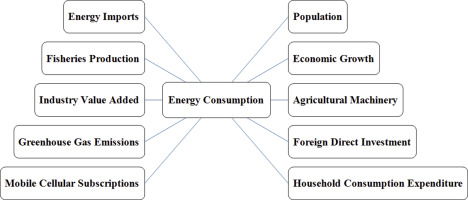Science of the Total Environment ( IF 8.2 ) Pub Date : 2018-10-13 , DOI: 10.1016/j.scitotenv.2018.10.147 Samuel Asumadu Sarkodie , Aba Obrumah Crentsil , Phebe Asantewaa Owusu

|
The study answered the following questions: First, does energy evolves in different regimes by transitioning over a finite set of unobserved states? Second, does energy consumption follow an asymmetric behavior over “energy boom” and energy scarcity? and, Third, are there unobserved factors underpinning energy crisis? We employed Markov-switching dynamic regression to examine the asymmetric effect, NIPALS regression to examine energy determinants and neural network analysis for prediction. The neural network model suggests a 99% prediction of energy consumption by the predictor variables. It was evident that energy consumption evolves in two states by transitioning over a finite set of unobserved states. The 11.6% growth in energy consumption is expected to occur in 4.1 years while energy crisis is expected to last for 3.7 years. Technological advancement and the development of green energy through foreign direct investment are essential to improve energy sector portfolio.
中文翻译:

能耗是否遵循不对称行为?对加纳能源部门动态的评估
该研究回答了以下问题:首先,能量是否会通过在有限的一组未观测状态之间转换而在不同的状态下演化?第二,能源消耗是否遵循“能源繁荣”和能源短缺的不对称行为?第三,是否有不为人知的能源危机根源?我们使用马尔可夫切换动态回归来检验不对称效应,NIPALS回归来检验能量决定因素,并使用神经网络分析进行预测。神经网络模型建议通过预测变量对能源消耗进行99%的预测。显而易见,能源消耗通过在有限的一组未观测状态之间转换而在两种状态下演变。能源消耗增长11.6%预计将在4.1年内发生,而能源危机预计将持续3.7年。











































 京公网安备 11010802027423号
京公网安备 11010802027423号